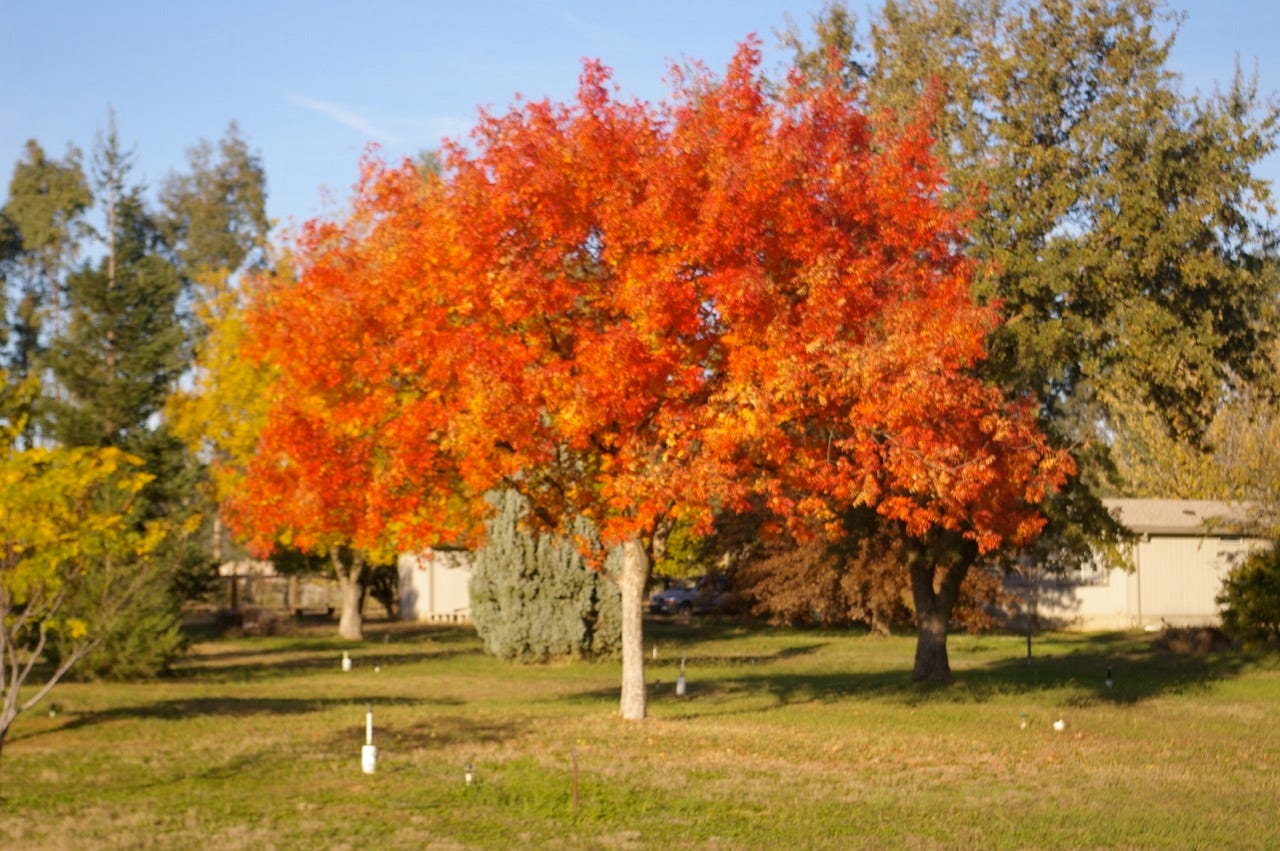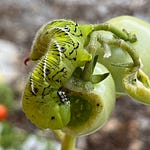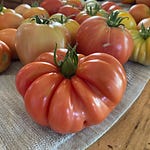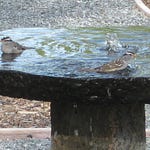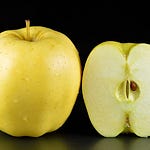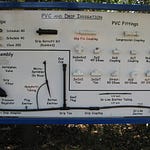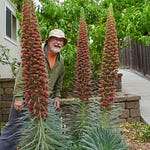Today’s newsletter podcast (recorded in January 2021) features an arborist discussing ways you can spot when your trees may be in danger of falling, especially in a wet, windy winter.
More information about what was discussed in the podcast can be found at the University of California Ag and Natural Resources publication, “Inspect Your Landscape Trees for Hazards”.
Small Trees for Small Yards
In this era of "Big House, Small Yard", choosing the right size tree can not only enhance the beauty of your backyard, it can forestall serious and expensive pavement problems that might force you to crack open your wallet in five to ten years. Planting a tree with a future height and spread of more than 40 feet in a small backyard will eventually make you recall that old TV show title, "Dark Shadows". Even spookier will be the repair bills when the extensive root systems of these larger trees start heaving and cracking your concrete patio, driveway, sidewalk and foundation.
The Sacramento Tree Foundation recommends planting large trees at least 15 feet away from any hardscaping or construction. If the site you've picked out for a new tree can't be situated that far away from any concrete, electrical systems or sewer pipes, here are some good, small trees that need only six feet of planting distance from building foundations, walks and driveways.
Most of these trees will get no taller than 25 feet: Amur maple, Japanese maple, eastern redbud, flowering dogwood, Washington hawthorn, crape myrtle, saucer magnolia and Bechtel crabapple.
Needing only 10 feet of "growing room" from tree to concrete are these medium-sized (25-40 feet) ornamental plants: trident maple, hedge maple, Japanese white birch, goldenrain tree, capital pear and chanticleer pear.
Before your shovel hits the ground, here is an easier way to plant your tree or shrub: instead of digging deep, dig wide. Then, refill that crater with the native soil. Current research from the University of California has shown that digging a hole an inch or two less than the depth of the tree's root ball (the portion in the container) is more beneficial than digging a deeper, narrow planting hole.
The trick to a successful planting also includes loosening the surrounding soil at the planting site. Loosen up the soil (again, to the depth of the root ball) in an area at least twice as wide as the container (for young trees and shrubs) or the entire diameter of the tree canopy. Even better, rototill out to six feet from the location of the tree trunk. A tree that can easily send out its lateral root system will have better access to water and nutrients.
Check the tree for girdled roots before planting. If the roots are encircling the rootball, slice through the length of the root ball on four sides about an inch deep. This will help the roots to spread down and out, not round and round.
Plant the tree so that the top of the root ball rests on solid soil, one to two inches higher that the surrounding soil; this allows for settling and helps avoid crown rot. Avoid soil amendments; by refilling the hole with the original soil, the tree more quickly adapts to the native environment where it will have to reach out in order to be successful.
Staking should only be done if the tree can't stand on its own. And by all means, remove the single stake that comes with the tree from the nursery. Use two stakes, one on either side of the root ball. Tie the tree to the stakes using old nylons or another flat, wide, ribbon-like article. Tie loosely at the lowest point on the trunk where the tree will stand upright. Remove the stakes as soon as the tree will stand on its own, usually not more than one year.
Lower Your Tree Size Expectations.
Freakish high gusts of wind are becoming more commonplace throughout Northern and Central California, especially with the change of the seasons. Last weekend, a Red Flag warning was posted by the National Weather Service for the danger posed by the combination of high winds and dry landscapes that might ignite wildfires. Sure enough, the high winds swept into several sections of our state. The Bay Area office of the National Weather Service reported high winds exceeding 50 and 60 miles per hour in several coastal areas. In Southern California, wind gusts of 50 miles per hour buffeted high profile vehicle traffic on Interstate 5, north of Los Angeles. And a wildfire broke out in Riverside County, which, at press time, was still only 20% controlled.
A bit closer to home, we nervously look at our neighbors’ huge conifers shedding small branches on windy days throughout the year.
That’s a not so gentle reminder of last January, when one of their 60-foot-tall Atlas cedar giants fell into our yard during a windstorm here in suburbia, a fallen tree that was so large that it caused damage in three different backyards.
If you are considering planting a tree, and you have a typically sized urban or suburban yard, you can minimize future damage from flying tree limbs to your property and your neighbors by choosing a medium sized tree. Generally, these are trees that grow between 25 and 40 feet tall. And November is still an excellent time for planting new trees in our area.
Shop for smaller trees that have minimal invasive roots and have several eye-catching traits such as colorful leaves, flowers, or distinctive bark.
Two trees that are underutilized in current landscapes that have minimal problems include:
• ‘Emerald Sunshine’ Elm (Ulmus propinqua). The ‘Emerald Sunshine’ elm is resistant to many of the problems of older elm varieties while maintaining a more reasonable eventual height: about 35 feet tall, with a spread of 25 feet tall. This elm has deep green leaves that turn yellow in the fall. ‘Emerald Sunshine’ is reportedly tolerant of hot, windy conditions, making it a good candidate for cities in warm summer areas with low humidity.
• ‘Redpointe’ Red Maple (Acer rubrum ‘Redpointe’). There are a lot of new red maple hybrids that have proven themselves in our area, especially the ‘October Glory’ red maple. The ‘Redpointe’ has many positive traits as well, although it does get a bit larger than the Chinese Fringe tree or the “Emerald Sunshine” elm, yet it still is much smaller that the ‘October Glory’ maple, which can get to 50 feet tall. The ‘Redpointe’ is described as a maple that is upright with a broadly pyramidal shape that requires little pruning. ‘Redpointe’ will reach 40 feet with a 20-foot spread. Its deeply lobed leaves are deep green from spring to fall when they turn a brilliant shade of red.
Here are a few more suggestions for trees that fit well in small to medium yards:
• Chinese Fringe Tree (Chionanthus retusus). Perfect for small yards, as it only gets about 20 feet tall with a spread of 10 to 15 feet. UC Master Gardener Cathy Ronk of Tulare County says the Chinese Fringe Tree has clusters of showy, lightly fragrant, fringe-like white blooms. The Chinese Fringe Tree is also one of UC Davis’ “Arboretum All-Stars,” notable for its yellow fall leaves and moderate water needs.
Trees recommended, along with comments, from the Sacramento Tree Foundation:
• Chinese pistache (Pistacia chinensis). 30-45 feet tall and wide. The Sacramento Tree Foundation says this tree has the “Best fall color show in our region. Nice round shape, and a low water user.” Choose a male variety such as the ‘Keith Davey’ to avoid the messy berries.
• Shantung Maple ‘Pacific Sunset’ (Acer truncatum ‘Pacific Sunset’). 25-30 feet tall and wide. “Hearty and fine textured, with larger leaves than regular Shantung maples.”
• Sweet Bay (Laurus nobilis). An evergreen tree or shrub, the Sweet Bay can get 30-40 feet tall, but takes well to pruning. “Dark green, dense form makes a good screen. Small yellow flowers in clusters followed by small black berries. Leaves are bay leaves used in cooking.”
• And again, a very popular tree for its summertime flowers is the crape myrtle (Lagerstroemia indica and its hybrids). This Chinese native gets about 25 feet tall, with a distinctive gray-light brown, exfoliating (peeling) bark that reveals a smooth whitish inner bark in the winter. It blooms best in warm summer climates, and is subject to mildew in moist climates. However, hybrid varieties have been bred for hardiness and mildew resistance. Look for varieties with names of native American tribes such as Arapaho, Hopi, Muskogee, Natchez, and Zuni.
=========================================================
Finally, this will be the last Beyond the Garden Basics newsletter/podcast for awhile. I’ll be taking a fall/winter break to recalibrate, recharge, rethink….and, of course, ride my bike.
Thank you for also listening to the Garden Basics with Farmer Fred podcast! It’s available wherever you get your podcasts. Please share it with your garden friends.
Fred Hoffman is also a University of California Cooperative Extension Master Gardener in Sacramento County.









